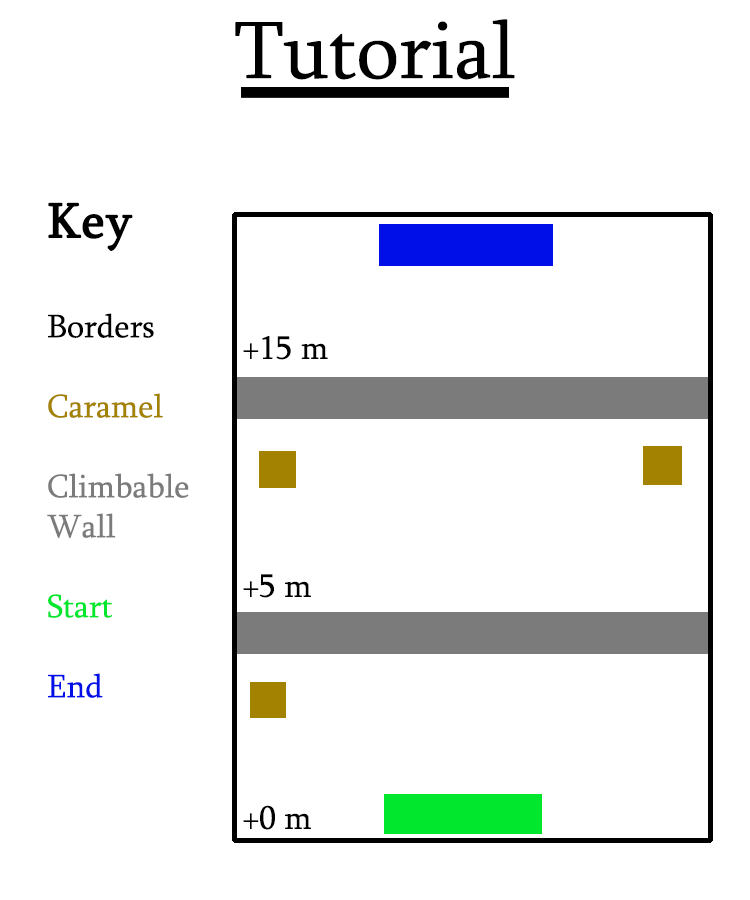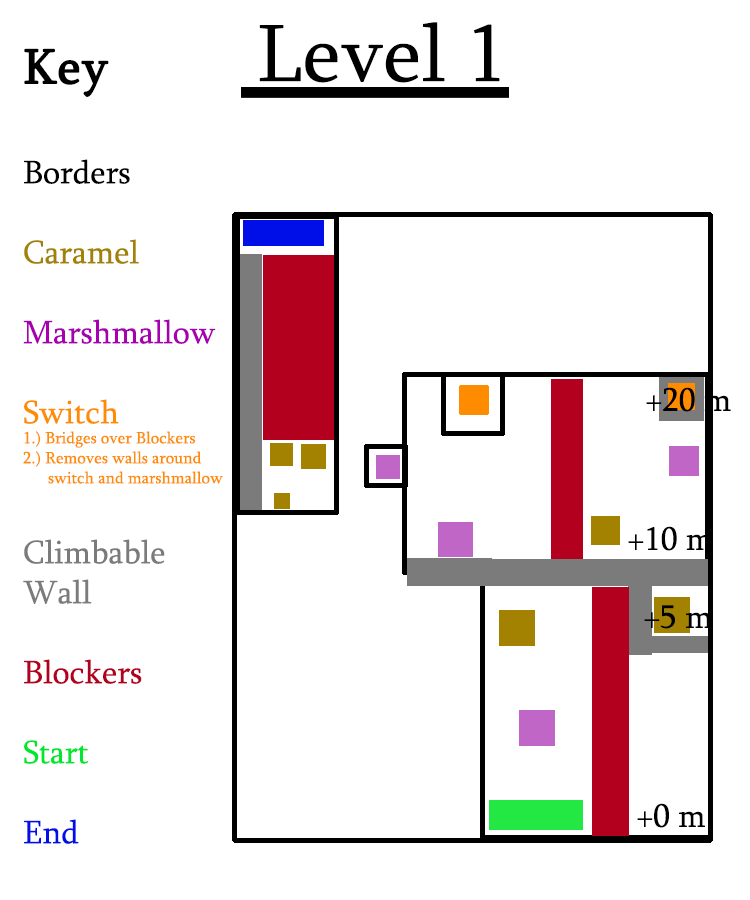Rolli Cannoli
Type: Level Design
Time Frame: 2 Weeks
Description: "Rolli Cannoli" is a puzzle-platformer where the player controls Rolli, a cannoli that can roll and coat itself in various toppings to alter its movement. As the sole level designer in a team of four, my responsibilities included creating the game's world sections consisting of three individual puzzles each, as well as designing a tutorial level to introduce the game mechanics.
Goal: The main objective of this game was to create an experience focused on pure "Fun." Collaborating with the team, we concluded that a quirky and unconventional way of navigating the environment would be at the core of this game's appeal. In terms of level design, my emphasis was on conveying information effectively and intuitively teaching the player about the mechanics. Additionally, this project marked my first step into designing puzzles within a game environment. One of my primary goals was to learn more about the puzzle design process and explore different approaches to creating engaging puzzles.
Tools: Unity, Adobe Photoshop
Gameplay
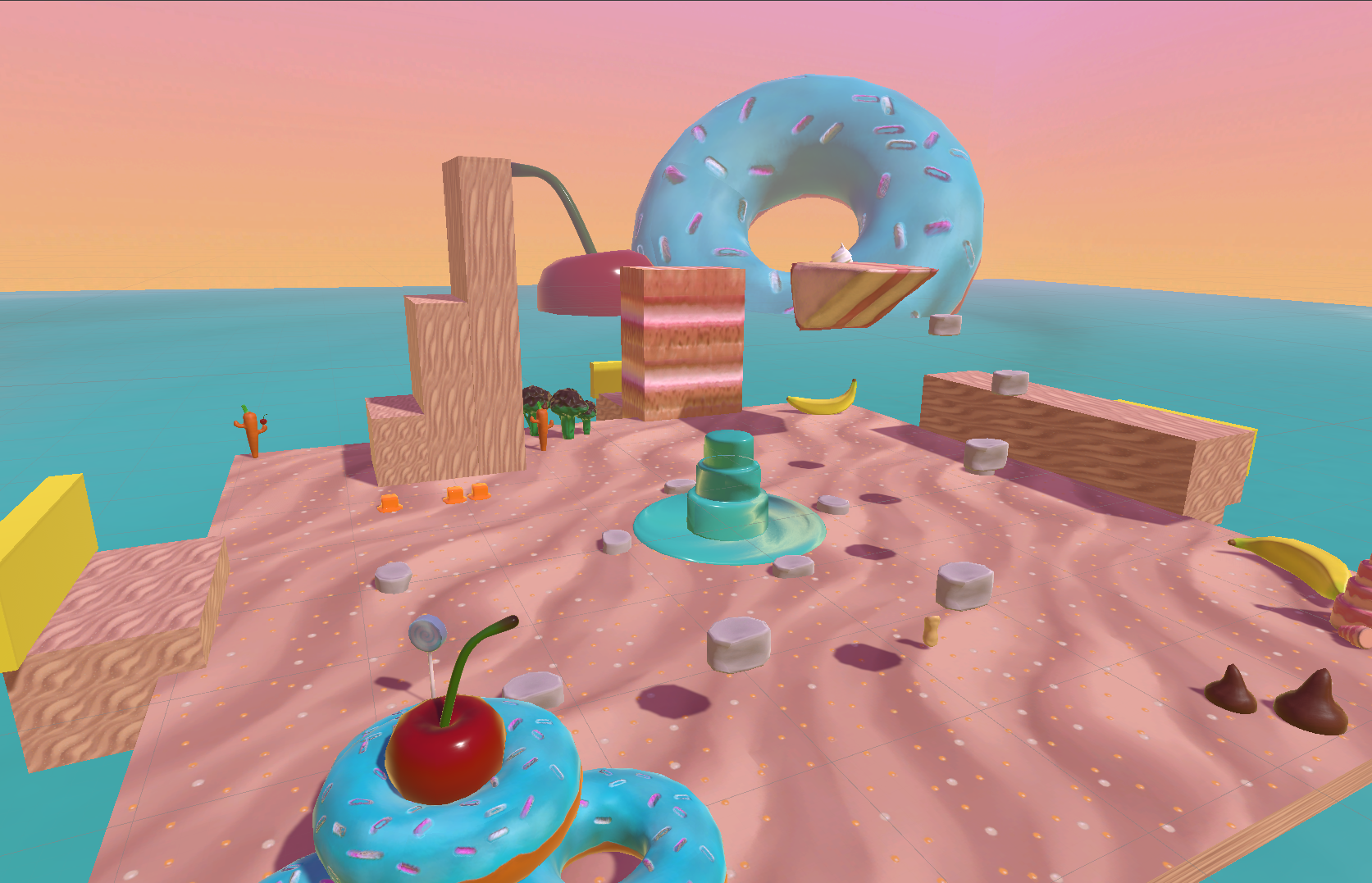
2D Layout and Concepting
To begin, we engaged in extensive brainstorming sessions to generate a wide range of mechanics that could be implemented using a rolling cannoli, providing players with an enjoyable and experimental movement system to explore within the levels. Once we had finalized the different ways players could manipulate their movement, I proceeded to create 2D layouts for various puzzle scenarios that incorporated these unique movement mechanics.
In terms of aesthetics, our intention was not to perform a complete set dressing, but rather to establish a cute and charming environment for the game. To achieve this, our team's artist created proxy whitebox models and textures that conveyed the sensation of rolling through a dessert-themed land. We drew significant inspiration from "Super Mario Odyssey," particularly the Luncheon Kingdom, incorporating its color scheme and environmental shapes.
Playtesting played a vital role in the development process of this project. I dedicated a substantial amount of time to personally experiencing and experimenting with the mechanics, exploring novel ways to incorporate them into puzzles while ensuring they remained enjoyable. Once the puzzles were created, it was crucial to ensure their intended functionality and prevent potential issues such as breaking or soft-locking the player. I addressed any identified issues through iterative processes, refining and reworking the original puzzle designs as necessary.
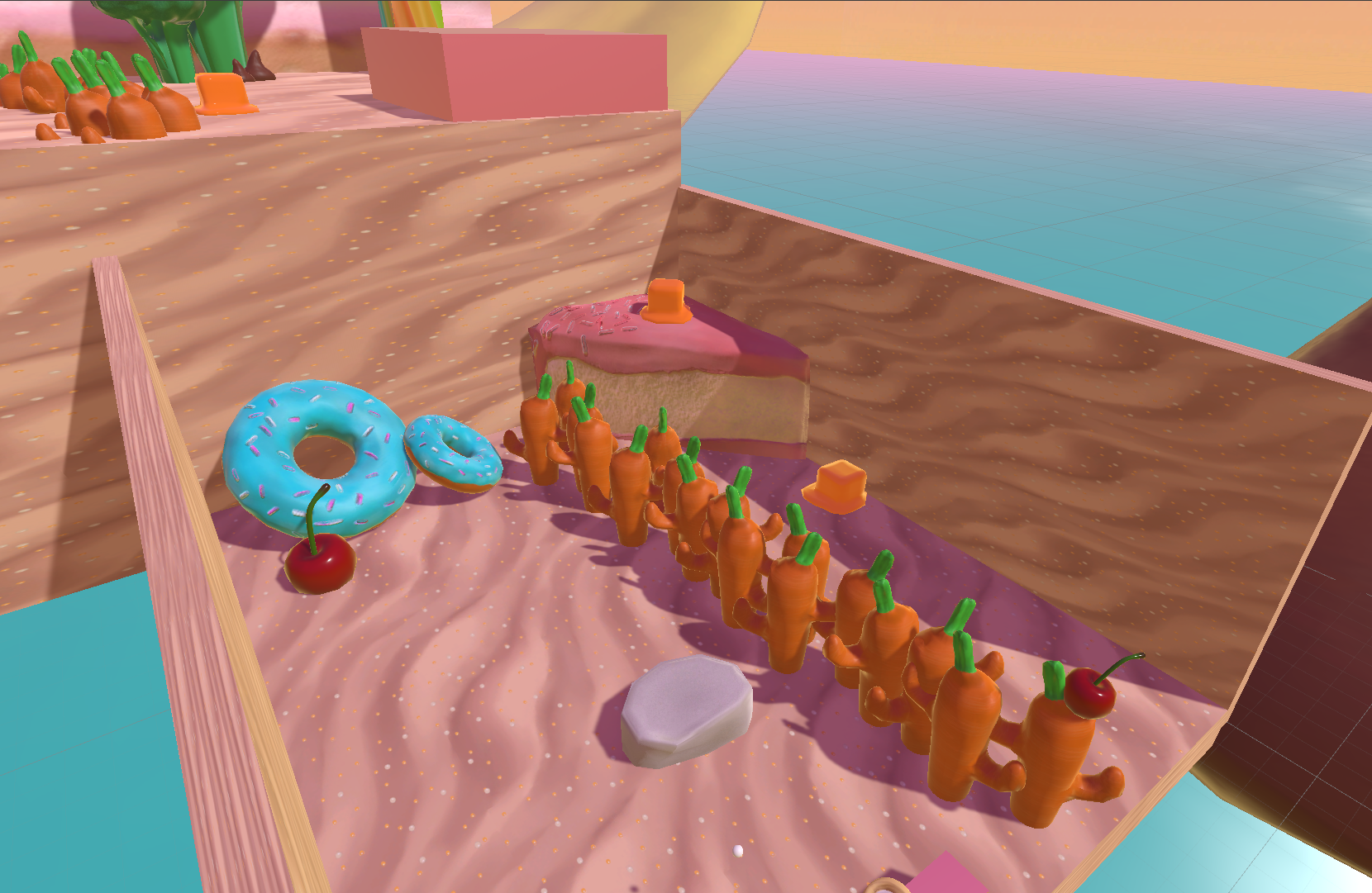
Whiteboxing
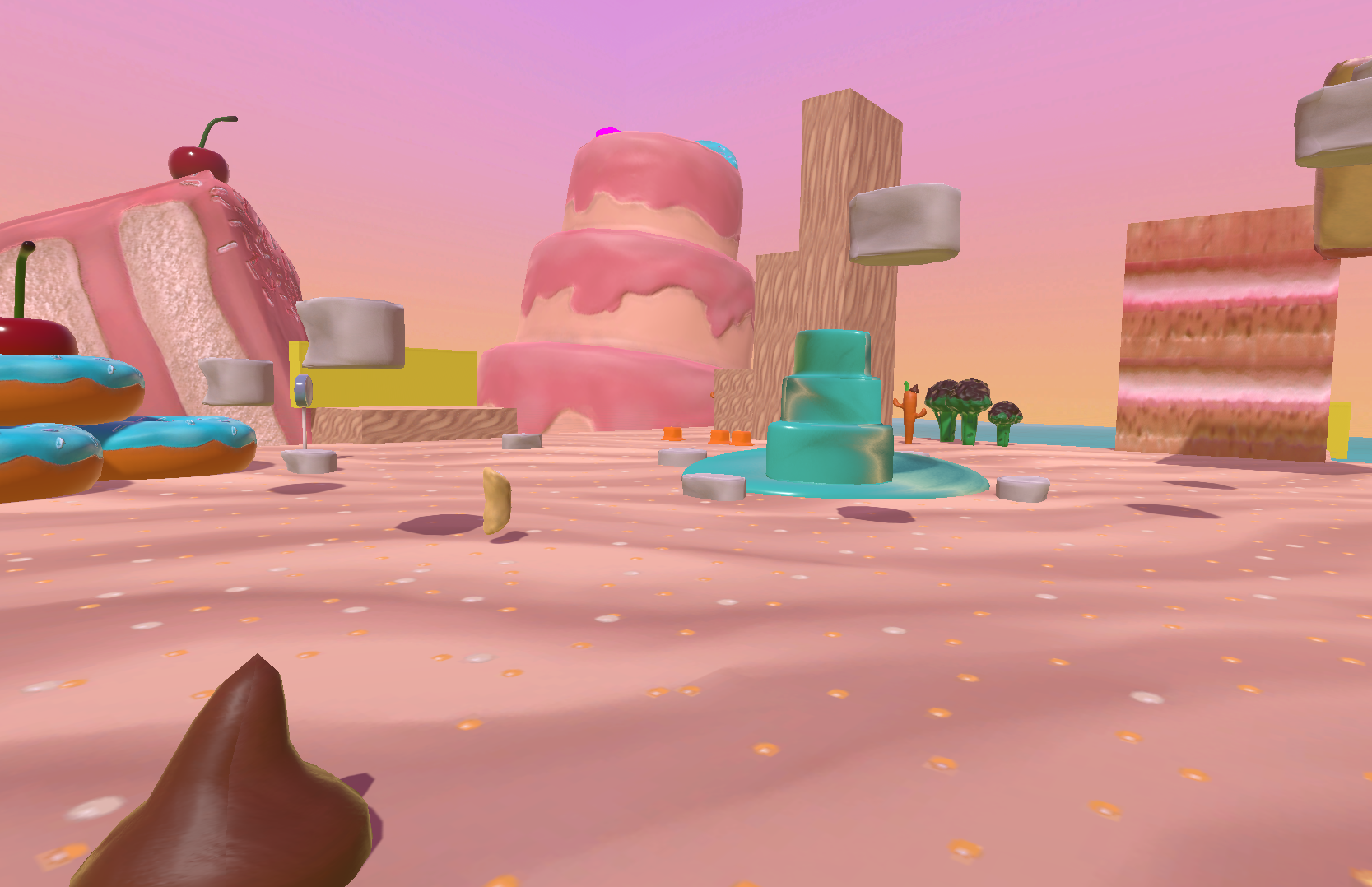
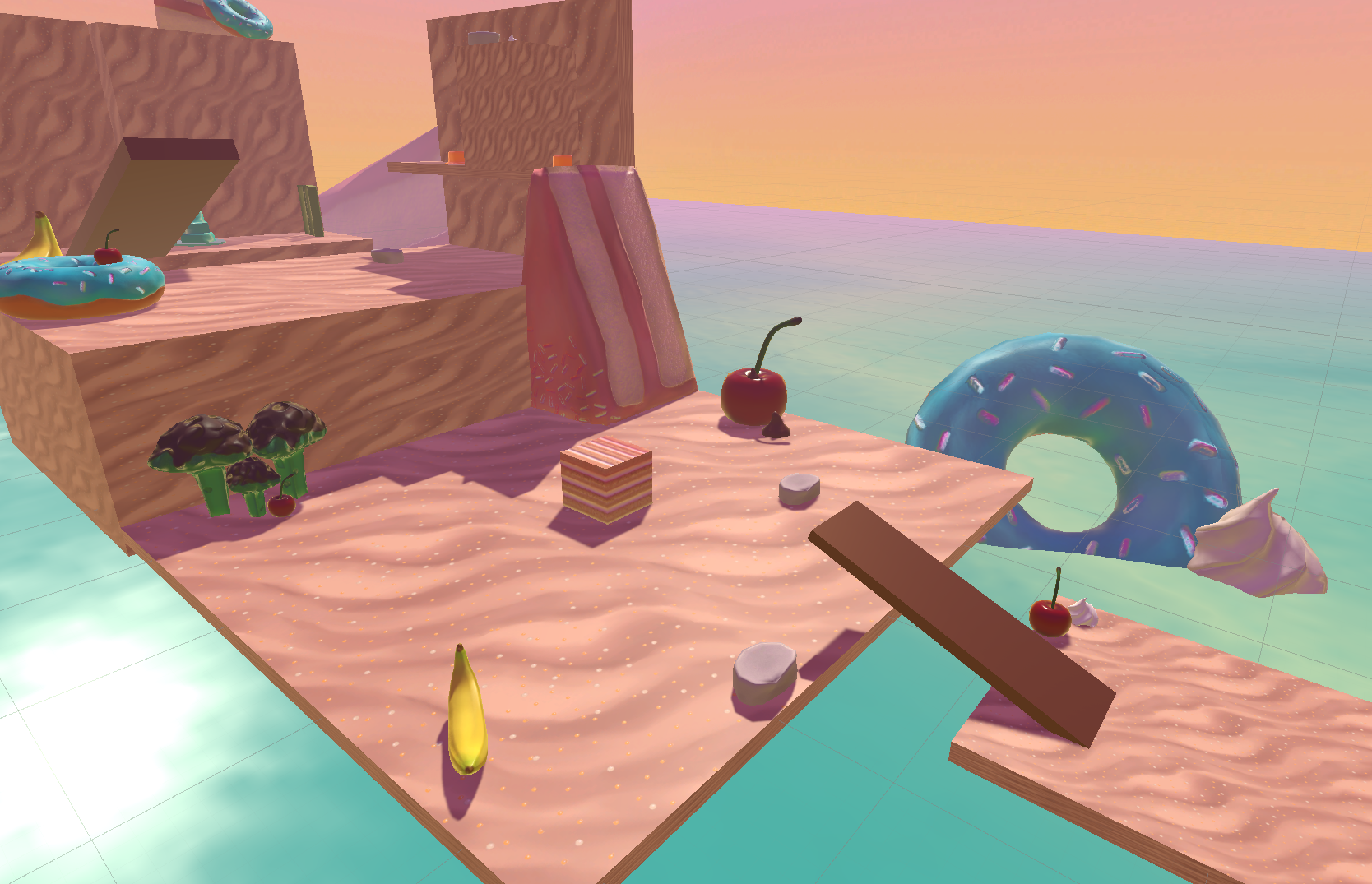
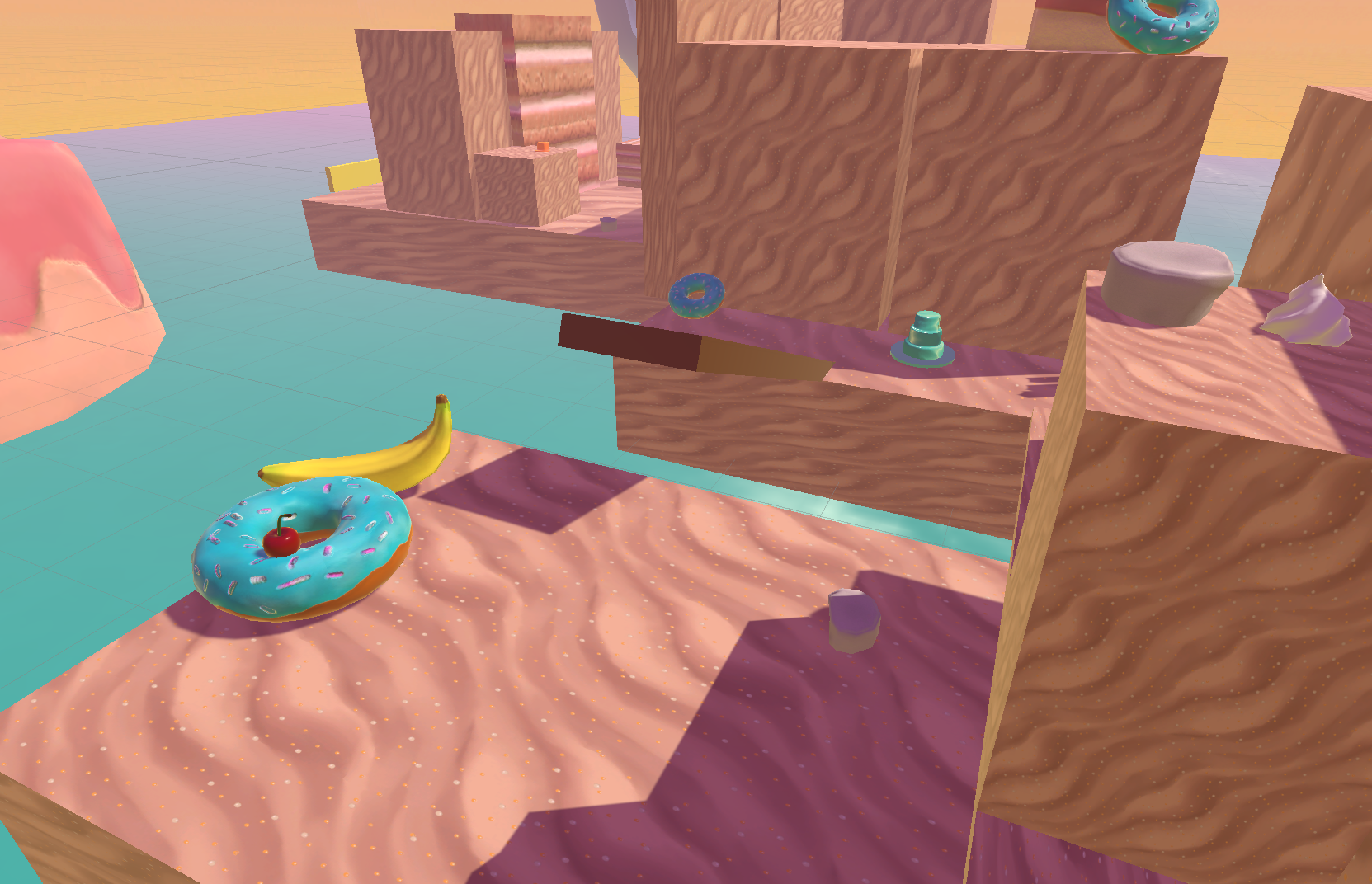

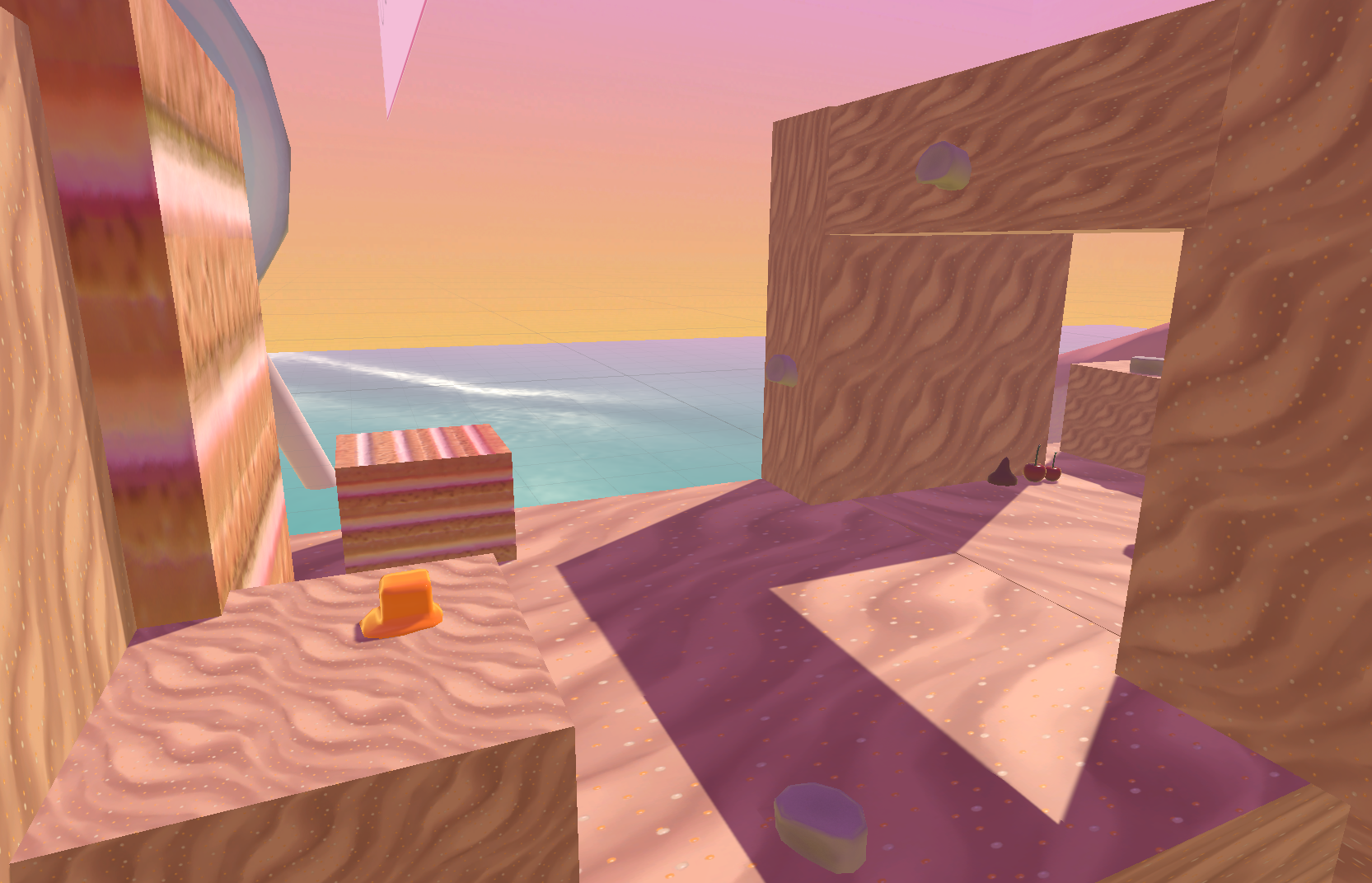
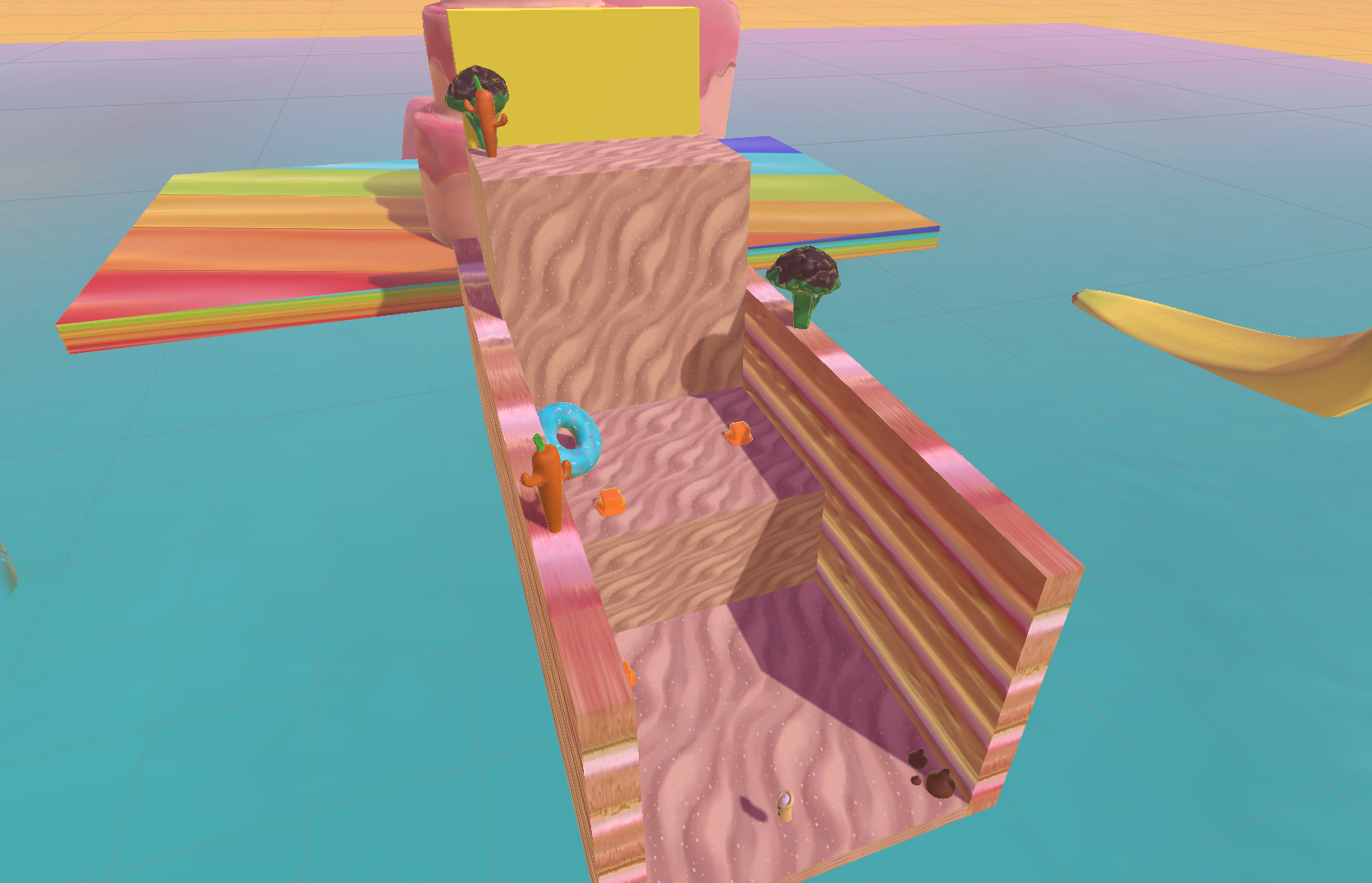
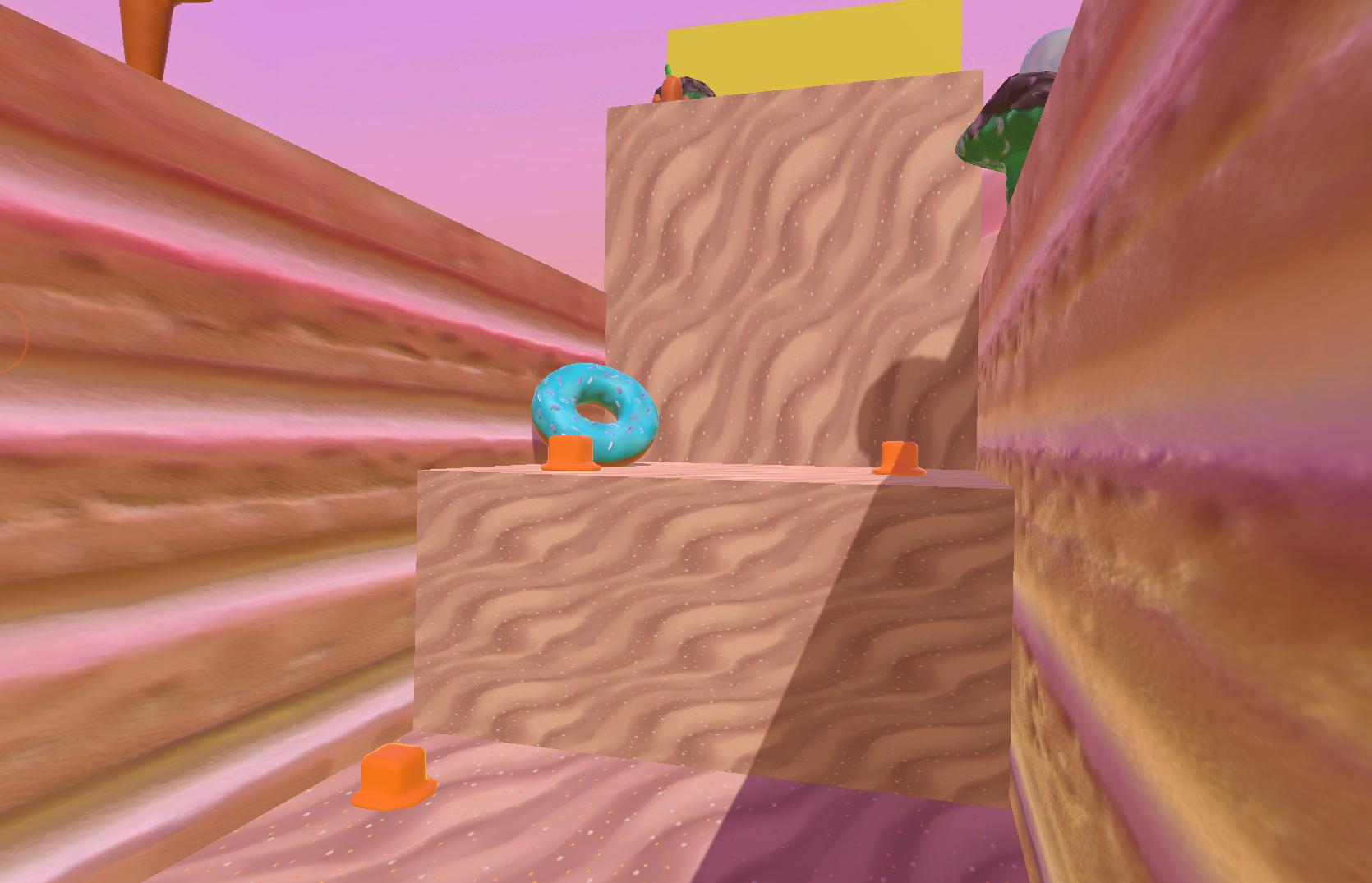

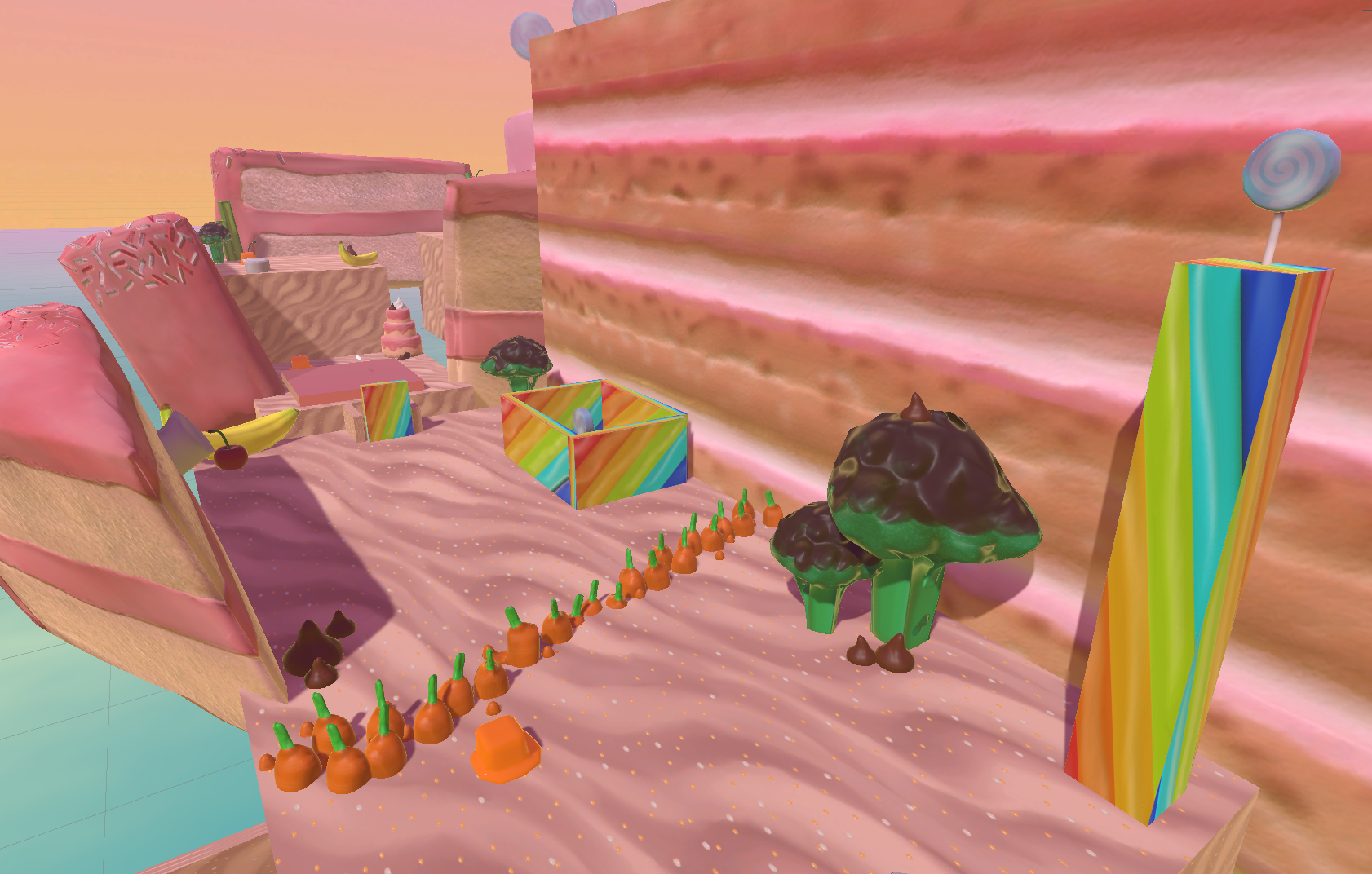
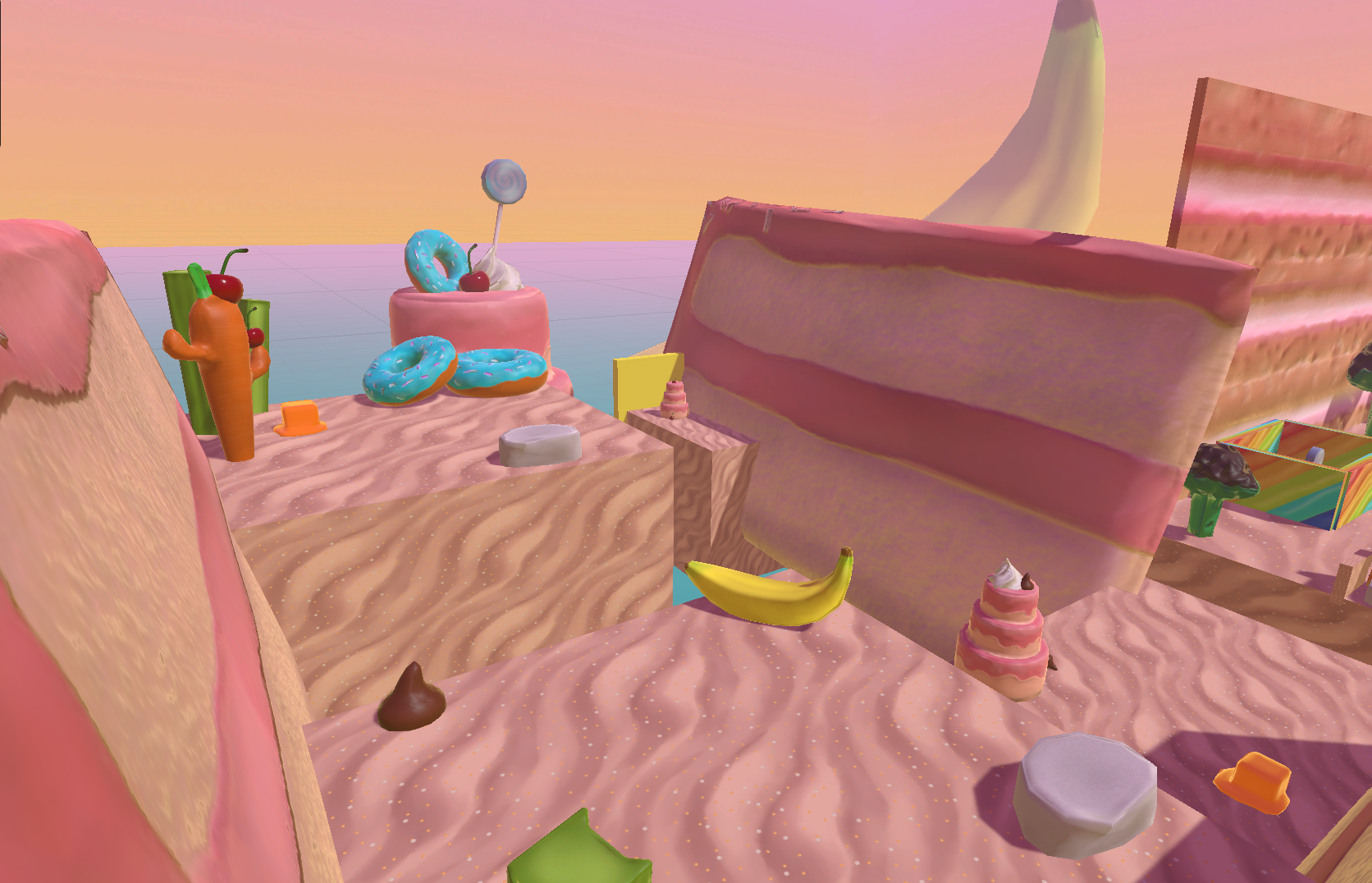
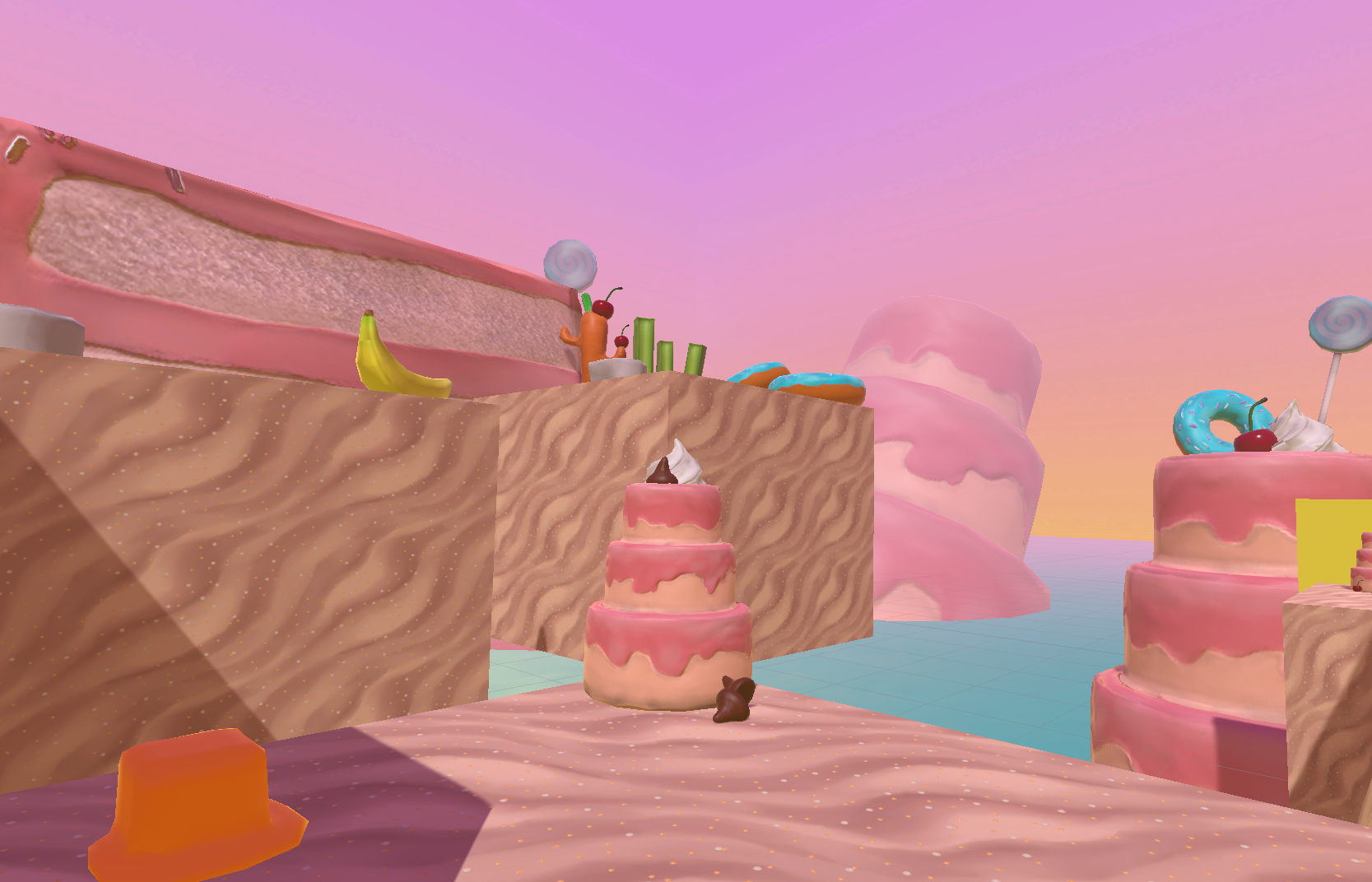


Retrospective
Retrospective
"Rolli Cannoli" was an incredibly enjoyable project to be a part of. Working with such a unique movement scheme was a fantastic experience for my first venture into creating puzzles within a video game environment. Additionally, this was my first time working with Unity, so a significant portion of this project involved familiarizing myself with the editor and its user interface.
One aspect that went exceptionally well was how quickly we were able to implement the initial iteration of the mechanics in the game engine, allowing me to start utilizing them. I discovered the tremendous power of action blocks during this process. My approach involved experimenting with different-sized walls and challenges while incorporating various mechanics that could provide different solutions to the problems presented. From there, I assessed which solutions felt the most intuitive and enjoyable, using them as the basis for creating the official levels within the engine.
During production, I faced challenges in determining the optimal difficulty for the puzzles. As a first-time puzzle designer, I held certain misconceptions about puzzle design that I gradually uncovered throughout the process. One particularly fascinating aspect that I researched was how puzzle games strategically scale the difficulty of puzzles in relation to one another. One of my initial mistakes was simply scaling up the difficulty of puzzles one after another, which did not yield satisfactory results during playtesting. Further research into other puzzle games revealed that difficulty scaling should be represented as a graph with highs and lows. While the overall difficulty should increase from the beginning to the end, it is beneficial to provide the player with an easier puzzle immediately after especially challenging ones, offering them a break.
This project challenged me to think critically about the psychological and cognitive dynamics of player enjoyment and how they relate to game design. It provided me with an eye-opening experience and expanded my perspective on approaching game design as a whole. I now find myself applying these insights to games I enjoy and play, which is a remarkable observation.

